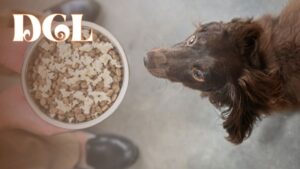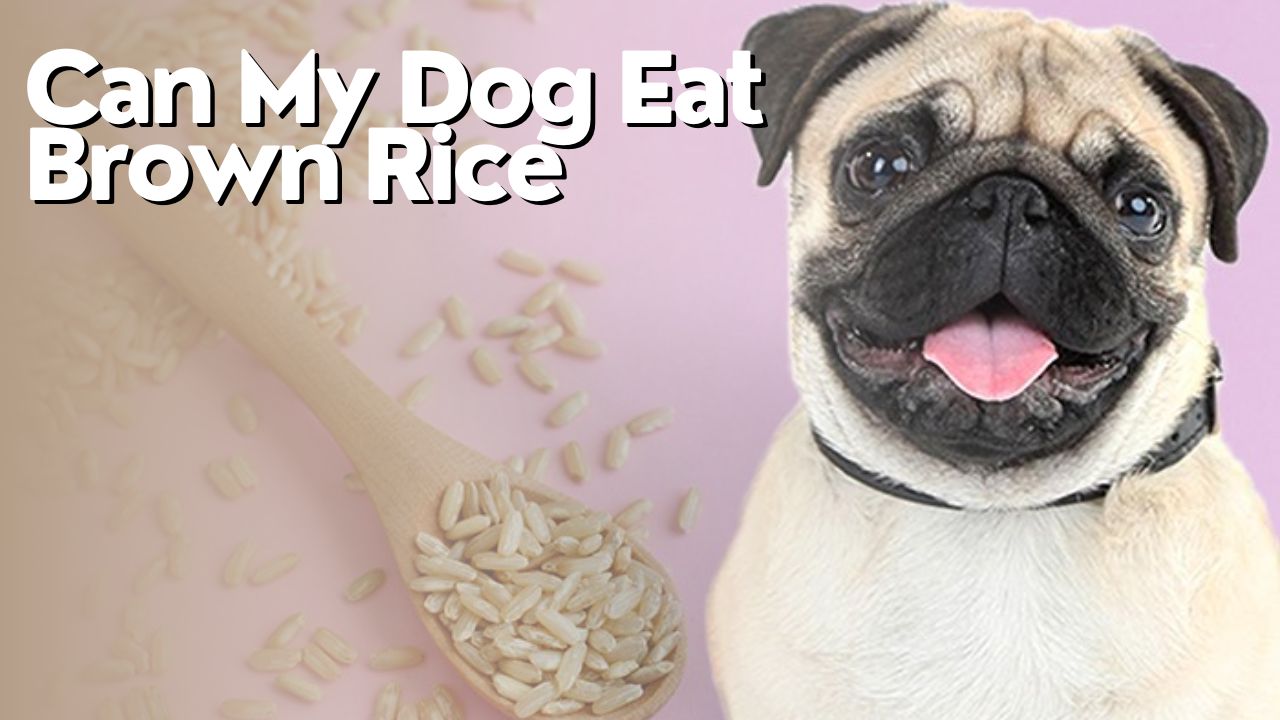Hey there, fellow dog owners! Have you ever wondered if it’s safe for your furry friend to munch on some brown rice? Well, you’ve come to the right place.
In this article, I’ll be diving into the nutritional benefits of brown rice for dogs, how to introduce it to their diet, and any potential risks you should be aware of. Plus, I’ll even share some creative ways to incorporate this healthy grain into your pup’s meals.
So, let’s get started and find out if brown rice is a good choice for your canine companion!
Nutritional Benefits of Brown Rice for Dogs
Yes, brown rice can provide nutritional benefits for dogs. As a responsible dog owner, I always make sure to give my furry friend a well-balanced diet, and brown rice is a great addition to his meals. Not only is it a good source of carbohydrates, but it also contains essential vitamins and minerals that contribute to his overall health.
One of the main benefits of brown rice for dogs is its high fiber content. This helps with digestion and can prevent constipation. It also provides a slow release of energy, keeping my dog satisfied and energized throughout the day. Additionally, brown rice is low in fat, which is important for maintaining a healthy weight and preventing obesity.
Brown rice is also packed with nutrients like manganese, magnesium, and selenium. These minerals are essential for proper bone growth, muscle function, and a strong immune system. They also support the overall well-being of my dog’s organs and tissues.
When preparing brown rice for my dog, I always make sure to cook it thoroughly. This makes it easier for him to digest and ensures that he can fully benefit from its nutritional value. I usually mix it with his regular dog food or add some lean protein to create a balanced meal.
In conclusion, feeding my dog brown rice has proven to be a great decision. It provides him with important nutrients, aids in digestion, and contributes to his overall well-being.

Introducing Brown Rice to Your Dog’s Diet
When introducing brown rice to my dog’s diet, I always start slowly and monitor their reaction. It’s important to see how their body responds to the new food and make adjustments accordingly.
I also make sure to cook the brown rice before serving it to my dog, as raw rice can be difficult for them to digest.
Lastly, I pay attention to portion sizes and ensure I’m giving my dog the right amount of brown rice to maintain a balanced diet.
Start Slowly and Monitor Your Dog’s Reaction
You should start slowly and monitor your dog’s reaction when introducing brown rice into their diet. It’s important to remember that every dog is different and may have different reactions to new foods. To ensure a smooth transition, start by mixing a small amount of cooked brown rice with your dog’s regular food. Gradually increase the amount of rice over the course of a few days, while decreasing the amount of regular food. Keep a close eye on your dog for any signs of digestive upset or allergies, such as vomiting, diarrhea, or itching. If you notice any negative reactions, stop feeding them brown rice and consult with your veterinarian.
| Pros | Cons |
|---|---|
| Rich in fiber | May cause digestive upset |
| Provides energy | Can lead to weight gain |
| Gluten-free | Allergies in some dogs |
| Nutrient-dense | May affect blood sugar levels |
| Helps with digestion | May interfere with medication absorption |
Cooked vs. Raw Brown Rice
To determine if cooked or raw brown rice is best for your pup, consider their specific dietary needs and consult with your veterinarian. Different dogs may have different tolerances and preferences when it comes to rice. Here are three factors to consider:
- Digestibility: Cooking brown rice makes it easier for dogs to digest as it breaks down the starches and makes them more accessible. This can be especially important for dogs with sensitive stomachs or digestive issues.
- Nutrient availability: Cooking brown rice increases the bioavailability of certain nutrients, such as carbohydrates and proteins. This means that the nutrients are more easily absorbed by your dog’s body, providing them with more energy and promoting overall health.
- Texture and taste: Some dogs may prefer the softer texture of cooked brown rice, while others may enjoy the crunchiness of raw brown rice. It’s important to observe your dog’s reaction and preferences to determine which option they prefer.
Remember to introduce any new food gradually and monitor your dog’s reaction for any signs of discomfort or allergies.
Proper Portion Sizes
Determining the proper portion sizes for your pup is essential for their overall health and well-being. Just like humans, dogs need a balanced diet to thrive. When it comes to feeding your dog brown rice, it is important to provide the right amount to avoid any potential health issues. The table below can serve as a guide to help you determine the appropriate portion size based on your dog’s weight:
| Dog Weight (lbs) | Portion Size (cups) |
|---|---|
| 10 | 1/4 – 1/2 |
| 20 | 1/2 – 1 |
| 30 | 3/4 – 1 1/4 |
Remember, these portion sizes are just a starting point. Factors such as age, activity level, and overall health should also be taken into consideration. It is always best to consult with your veterinarian to determine the exact portion size that is right for your furry friend.
Potential Risks and Considerations
When considering feeding your dog brown rice, it’s important to be aware of potential risks and considerations. While brown rice can provide some health benefits for dogs, it’s crucial to understand that it may not be suitable for every dog.
One potential risk is that brown rice contains higher levels of arsenic compared to white rice. Arsenic is a toxic substance that can be harmful to dogs if consumed in large amounts over a long period. Therefore, it’s essential to moderate the amount of brown rice your dog consumes and ensure it is cooked properly to minimize any potential risks.
Another consideration is the possibility of allergies or sensitivities to rice. Some dogs may be allergic to grains, including rice, and can experience digestive issues or skin problems when consuming it. If you notice any adverse reactions after introducing brown rice to your dog’s diet, it’s best to consult with a veterinarian to determine if it’s causing an allergic reaction.
Additionally, brown rice is high in carbohydrates, which can be problematic for dogs that are overweight or have certain medical conditions, such as diabetes. It’s important to consider your dog’s specific dietary needs and consult with a veterinarian to determine if brown rice is a suitable addition to their diet.
In conclusion, while brown rice can have some health benefits for dogs, it’s important to be aware of potential risks and considerations. Moderation, proper cooking, and monitoring your dog’s reaction are key when introducing brown rice into their diet. Consulting with a veterinarian is always recommended to ensure your dog’s overall health and well-being.
Creative Ways to Incorporate Brown Rice into Your Dog’s Meals
One way to add variety to your furry friend’s meals is by getting creative with how you incorporate this nutritious grain. Brown rice can be a great addition to your dog’s diet, providing them with essential nutrients like fiber, vitamins, and minerals.
There are several creative ways you can incorporate brown rice into your dog’s meals. Firstly, you can mix cooked brown rice with lean proteins like chicken or turkey. This combination not only adds flavor but also ensures a balanced meal for your dog. You can also add some vegetables like carrots or peas for added nutrients.
Another creative way to use brown rice is by making homemade dog treats. You can mix cooked brown rice with mashed sweet potatoes, peanut butter, and a little bit of honey to create a delicious and healthy treat for your furry friend. Just make sure to bake them until they are firm.
Additionally, you can stuff a Kong toy with a mixture of cooked brown rice and canned pumpkin. Freeze it for a few hours, and your dog will have a tasty and interactive treat to enjoy.
Remember to always consult with your veterinarian before making any significant changes to your dog’s diet. With a little creativity, you can easily incorporate brown rice into your dog’s meals and provide them with a nutritious and delicious addition to their diet.

Conclusion: Brown Rice as a Healthy Addition to Your Dog’s Diet
To wrap it up, incorporating brown rice into your pup’s meals can be a healthy and flavorful choice. Not only does brown rice provide essential nutrients like fiber, vitamins, and minerals, but it also offers a tasty alternative to traditional dog food. Adding brown rice to your dog’s diet can help improve their digestion, regulate blood sugar levels, and support a healthy weight. Plus, it’s a great option for dogs with allergies or sensitivities to other grains.
One creative way to incorporate brown rice into your dog’s meals is by making homemade dog treats. You can mix cooked brown rice with other dog-friendly ingredients like lean meat, vegetables, and eggs, and bake them into delicious and nutritious treats. Another idea is to use brown rice as a base for your dog’s meals, mixing it with protein sources like lean chicken or beef, and adding in some steamed vegetables for extra nutrients.
Remember, when introducing brown rice to your dog’s diet, it’s important to start slowly and monitor their reaction. Some dogs may be sensitive to grains or have trouble digesting them. If you notice any negative symptoms like diarrhea or vomiting, it’s best to consult with your veterinarian.
Overall, brown rice can be a beneficial addition to your dog’s diet, offering both health benefits and variety in their meals. So why not give it a try and see how your furry friend enjoys this nutritious grain?
Frequently Asked Questions
Can my dog eat brown rice if they have a grain allergy?
If your dog has a grain allergy, it’s best to avoid feeding them brown rice. Even though it’s considered a healthier option, it can still trigger an allergic reaction in sensitive dogs.
How much brown rice should I feed my dog each day?
I feed my dog about 1/4 to 1/2 cup of cooked brown rice per meal, depending on their size and dietary needs. It provides a good source of carbohydrates and fiber for their overall health.
Can brown rice help with my dog’s digestion?
Yes, brown rice can help improve your dog’s digestion. It is high in fiber which aids in promoting a healthy digestive system. However, it’s important to introduce it gradually and monitor your dog for any adverse reactions.
Is it safe to feed my dog leftover cooked brown rice?
It is generally safe to feed leftover cooked brown rice to my dog. However, it’s important to ensure that it is plain and doesn’t contain any seasonings or additives that may be harmful to dogs.
Can brown rice be used as a substitute for commercial dog food?
Yes, brown rice can be used as a substitute for commercial dog food. It provides essential nutrients and is a healthy option. However, it’s important to consult with a veterinarian for proper portion sizes and to ensure a balanced diet.
Conclusion
In conclusion, I’ve found that brown rice can be a healthy addition to my dog’s diet. It provides various nutritional benefits, such as being a good source of fiber and promoting digestion.
Introducing brown rice gradually and in moderation is key to avoid any potential risks or digestive issues. I can get creative by incorporating brown rice into my dog’s meals, such as mixing it with lean proteins or vegetables.
Overall, I’m confident that brown rice can be a nutritious and tasty option for my furry friend.


